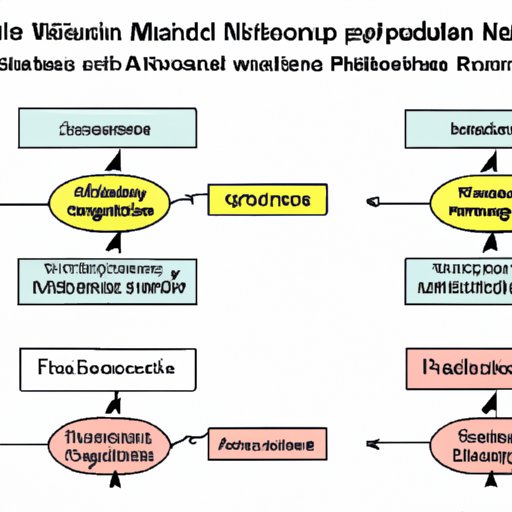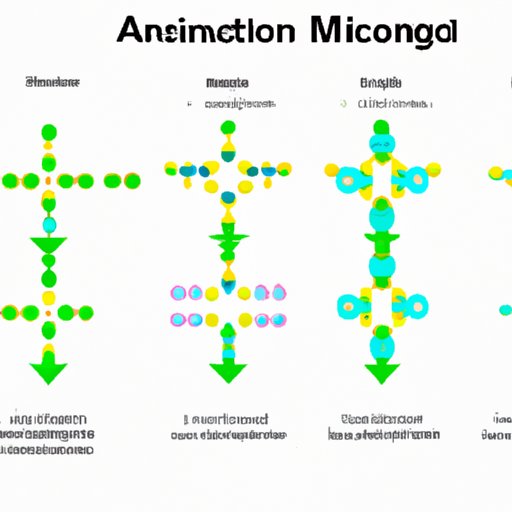I. Introduction
Mutations are changes in the genetic code that can have a significant impact on the development of organisms. They can occur naturally or as a result of environmental factors. Understanding the impact of mutations on the genetic code is essential to understanding the process of protein synthesis, which is essential for the development and survival of living organisms.
II. Exploring the Effects of Mutations on Amino Acid Sequence: An Overview
Mutations can significantly impact amino acid sequence, resulting in a variety of effects on protein expression, function, and structure. Mutations can be broadly classified into two main categories: point and frameshift mutations. Point mutations are small changes in the DNA sequence, while frameshift mutations involve the insertion or deletion of nucleotides, creating a shift in the reading frame.
III. Understanding Abnormal Amino Acid Sequence: How Mutations Play a Role
Abnormal amino acid sequences occur when mutations alter the order or composition of amino acids in a protein. These mutations can have a significant impact on the structure and function of the protein. For example, a single point mutation in the β-globin gene can lead to the development of sickle cell disease, which results in the formation of abnormal hemoglobin proteins and other health-related problems.
IV. Breaking Down the Science: Types of Mutations Leading to Abnormal Amino Acid Sequences
Point mutations can lead to silent, missense, or nonsense effects on amino acid sequence. Silent mutations usually do not impact protein function, whereas missense mutations alter a specific amino acid sequence, resulting in a deviation from the standard protein sequence. Nonsense mutations cause premature termination of protein synthesis.
On the other hand, frameshift mutations can significantly change amino acid sequence, often disrupting protein function entirely. They can occur due to the insertion or deletion of nucleotides, leading to a phase shift in the reading frame of the DNA sequence.
V. The Importance of Understanding Mutation Types for Protein Synthesis
Understanding different mutation types can help identify and predict abnormal amino acid sequences. This knowledge is essential in the development of new treatments or therapies for genetic disorders that result from mutations.
Moreover, it can help identify the impact of amino acid sequence changes on protein synthesis, function, and structure. It also helps predict the potential effects of these changes on a range of developmental and disease-related conditions.
VI. Mutations and Amino Acid Sequence: The Link You Need to Know About
Mutations in the genetic code can significantly impact the expression and structure of proteins, leading to the development of genetic diseases, developmental abnormalities, and other medical conditions. Understanding the critical link between mutations and abnormal amino acid sequences is a crucial first step in developing effective treatments and therapies.
VII. A Comprehensive Guide to Mutations Leading to Abnormal Amino Acid Sequences
There are several types of mutations that can lead to abnormal amino acid sequences. For example, trisomy 21, a common genetic disorder, is caused by an extra copy of chromosome 21 in the genome. It leads to phenotypic alterations, such as mental retardation, growth problems, and susceptibility to various medical conditions.
Another example is the cystic fibrosis transmembrane conductance regulator (CFTR) gene that produces a transmembrane protein that regulates the transport of certain ions across the membrane. Mutations in this gene lead to the development of cystic fibrosis, which is caused by abnormal protein folding and trafficking, leading to various health problems, such as respiratory and pancreatic dysfunction.

VIII. Mutations and Their Impact on Protein Synthesis: A Closer Look at Abnormal Amino Acid Sequences
The impact of mutations on protein synthesis can be profound, leading to altered protein expression, function, or both. Abnormal amino acid sequences resulting from mutations can lead to significant changes in protein structure, which can result in the loss of protein function or the development of new or abnormal functions.
The impact of mutations on protein structure can also have significant implications for the development of genetic disorders. In some cases, mutations can lead to new or abnormal protein synthesis that can trigger the onset of various medical disorders.
IX. Conclusion
Understanding the critical link between mutations and abnormal amino acid sequences is a crucial first step in identifying and predicting a wide range of genetic disorders. Developments in molecular biology and genetics research give us new insights into the genetic mechanisms that underlie the development of these disorders. Effective strategies that target the underlying molecular defects of genetic disorders offer a way to mitigate the impact of these conditions on individuals’ lives.
Finally, as our understanding of these mutations and their impact on protein structure and function continues to evolve, it is important to continue supporting research efforts to expand our knowledge in this area. By doing so, we can continue to develop treatments and therapies that effectively address the complex nature of these disorders.
